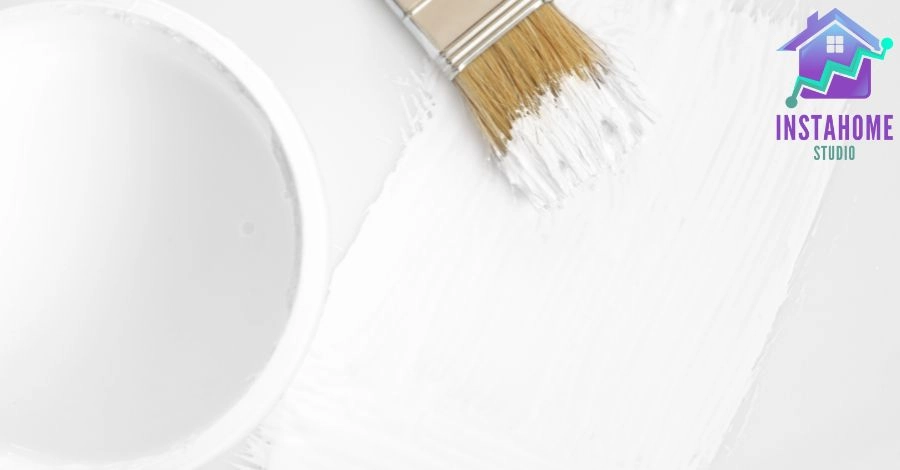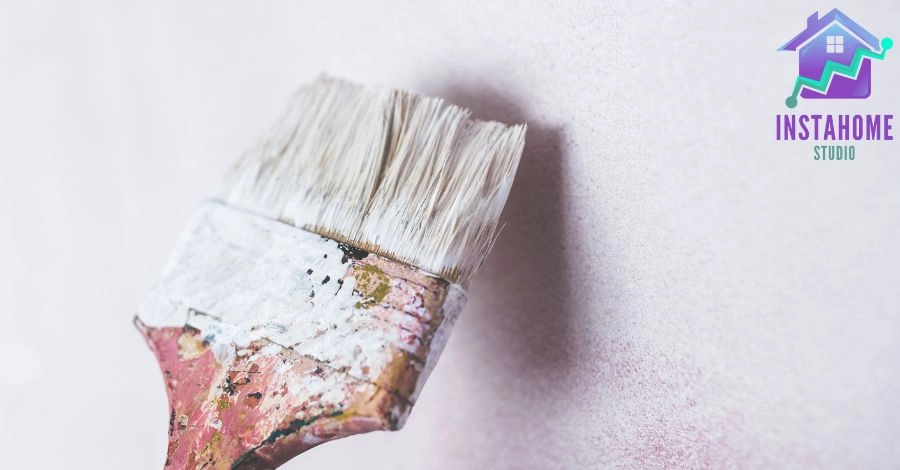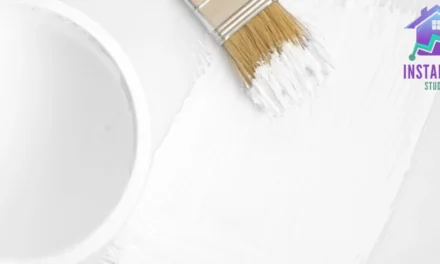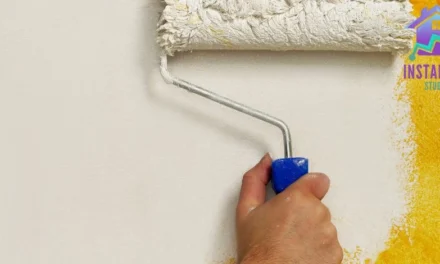Well, it’s worth starting by explaining what exactly latex paint is? From a professional point of view, it is an emulsion acrylic paint (usually) with a high content of resins in the composition. And in a much more human way, these are simply special paints that, due to the resins in the composition, have a lot of special properties.
By this, of course, we mean such features as water resistance or resistance to scrubbing and abrasion. Of course, latex paints have many more advantages, which we will talk about a little later. It is also worth mentioning that they are also not too expensive and are a very good choice in many situations.
The most important properties of latex paints

The properties and all the useful features of latex paints are really a whole lot. We have only mentioned two or three above, and there are many more. Unfortunately, we are unable to tell you all of them because a short article would turn into a small book. However, you can read the most important and useful ones below:
Waterproof and hydrophilic
Latex paints, due to the presence of the aforementioned resins in the composition, have properties that make them completely resistant to water. Splashes, flooding, etc. are not terrible for them in any way. But it’s not over. All latex paints are also very resistant to all detergents and other chemical cleaning agents such as dishwashing liquid or soap.
Scrub resistance
Since the paint coating of latex paints is already resistant to both water and various cleaning agents, it would be useful if they were also resistant to scrubbing. And that’s exactly how it is. Cleaning the surface with sponges or brushes with soft bristles is completely safe for the wall and does not even require the use of too much force.
Resistance to mechanical damage
Latex paints are almost completely resistant to minor mechanical damage, such as e.g. scratches or bruises. After drying on the surface, the walls become hard and durable. Damaging them is kind of a small challenge. However, it should be borne in mind that it is not an indestructible diamond.
Of course, there may be various situations where paints may start to suffer some damage. If we depend on this property the most, then a good alternative are, among others: ceramic paints, e.g. from Magnat. They have the same properties as latex but are much more durable.
Resistant to stains and dirt
Stains and dirt are not special problems for latex paints and can be dealt with quite quickly without any major problems. Whether it’s food, crayon, oil or drink stains, it makes no difference. Without any major problems, we will be able to clean them with a sponge, water and possibly some detergents such as dishwashing liquids or soap.
Thanks to the fact that the paint is also resistant to water and scrubbing, it will not be damaged in any way. It will keep its impeccable appearance for a long time.
Antistatic
This is nothing more than the property of not attracting dust and other such dirt. Thanks to this, they are a very good choice in rooms for allergy sufferers or small children. They also work well in public places.
How well are latex paints suitable for painting walls?
When it comes to the wide use of latex paints, we could talk about it for a very long time. Due to their many resistances, they can be used almost everywhere.
They are perfect for bathrooms, kitchens (i.e. rooms that usually have an increased level of moisture), living rooms, children’s rooms or even bedrooms and corridors.
ATTENTION! If we are dealing with very absorbent surfaces, such as glass fiber wallpaper, it may be necessary to dilute the paint with water or even thinner.
How well will latex paints work on drywall? You can even say that they fit there almost perfectly. For smooth surfaces, such as drywall, thick paints will be perfect, i.e. paint latex paints (acrylic paint will also work).
Bathrooms and kitchens
It is not surprising that we start with these rooms characterized by an increased level of humidity. Thanks to this, it is an ideal space to apply latex paints, it can be said that they will find themselves there like „a fish in water” or even better.
Therefore, any stains during cooking or eating are not a problem. In the case of the bathroom, however, neither moisture nor splashes or even flooding are any problem.
Hallway and corridor
This is a perfect place for latex paint. In the corridor, it is very easy to get moisture, dirt brought from the outside and minor damage, which we discussed earlier.
As you can see, latex paint works great where the environment is more demanding. It will allow you to keep the hall or corridor in very good condition due to its properties and excellent coverage. Both in terms of aesthetics and strength.
How can you clean latex paints?
There is no need to dwell on it, and probably everyone already knows why. about absolutely nothing. Latex paints do not require anything when it comes to cleaning.
You grab a damp sponge or other cloth and use it to start cleaning stains or other dirt on the surface and that’s it. Of course, if there is a more difficult dirt, we can use additional soap or some dishwashing liquid if necessary. It can be any non-caustic cleaning agent.
ATTENTION! We advise against using very corrosive substances because they can negatively affect the paint and damage it.
It is also worth remembering that latex paints are divided into 3 different classes.
Class I – the highest quality with all the properties we have mentioned.
Class II – i.e. the middle class. They are a little less efficient and have slightly weaker properties.
Class III – this is the weakest and at the same time the cheapest class. They are characterized by the fact that they are not resistant to wet cleaning (in most cases). We advise against choosing latex paints of this class.
Acrylic or latex paint? Which is better?
Painting which of these paints is better? Acrylic will be more suitable for our walls or maybe latex is more efficient? What paint will be better? These are some of the most frequently asked questions on the Internet, so we will try to answer them. Contrary to the name, latex paint does not contain latex, only a special resin.
Just like acrylic paint. For some reason, there is a belief that latex paints are the same as acrylic paints, but this is obviously not true. That’s right, acrylic paints and latex paints are based on the same resin, but latex paints contain much less of them, which affects its properties.
If we were to put it in the simplest way, due to the much smaller amount of resins and other ingredients in acrylic paints, their properties are much weaker than those of latex paints. p. have less resistance to moisture or mechanical.
Acrylic paint can be used as a primer for other paints, e.g. as a primer before applying latex paint. There are quite a lot of acrylic paints, so we shouldn’t have any problems with choosing them.
The texture on the wall is also a very important issue here. A matte finish is not something we can expect from acrylic paints. They give the surfaces a slightly shiny finish.
Latex or ceramic paint?
Here’s another point that we won’t dwell on too much. As for the differences between ceramic and latex paints, they occur mainly at the production stage, and more precisely in the composition of the paints themselves. However, if we were to indicate those that are directly perceptible to us, there are two.
Mechanical resistance – ceramic paints are more durable and durable than latex paints due to their richer composition. You can say that latex paints are slightly worse ceramic paints (remember, the fact that they are worse than latex paints does not mean that they are bad). Ceramic, they are able to withstand more hard blows. In short, they’re just harder to damage. They are harder and more durable.
Price – ceramic paints have better properties in several respects, but nothing is free today. They are much more expensive than latex paints. Their prices can be really high. However, you need to be aware that they compensate us with their quality, which is indisputable.
How much do latex paints cost?
At the beginning, we will warn you that this is a typical indicative valuation (just like most guides of this type). This is due to the fact that the price of given paints may differ due to the manufacturer, quantity, additional properties and, above all, the classes we mentioned in point 3. On average, we will pay about $ 20 for 1l for a first-class latex paint.
The average price for class II latex paint is about $ 12 per 1 litre.
The average price for class III latex paint is about $ 8 per 1 litre. (This is the lower limit.)





